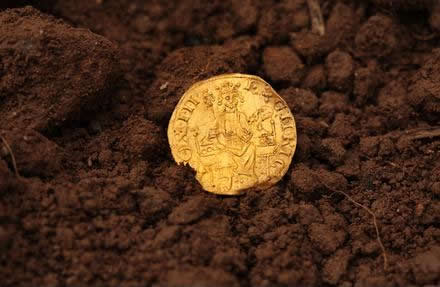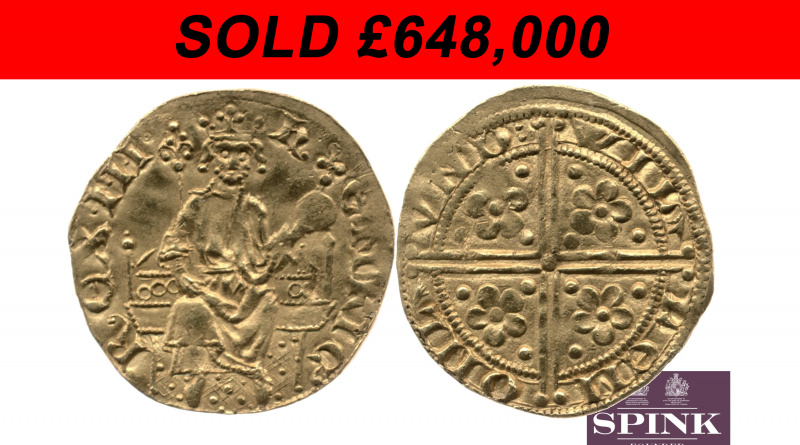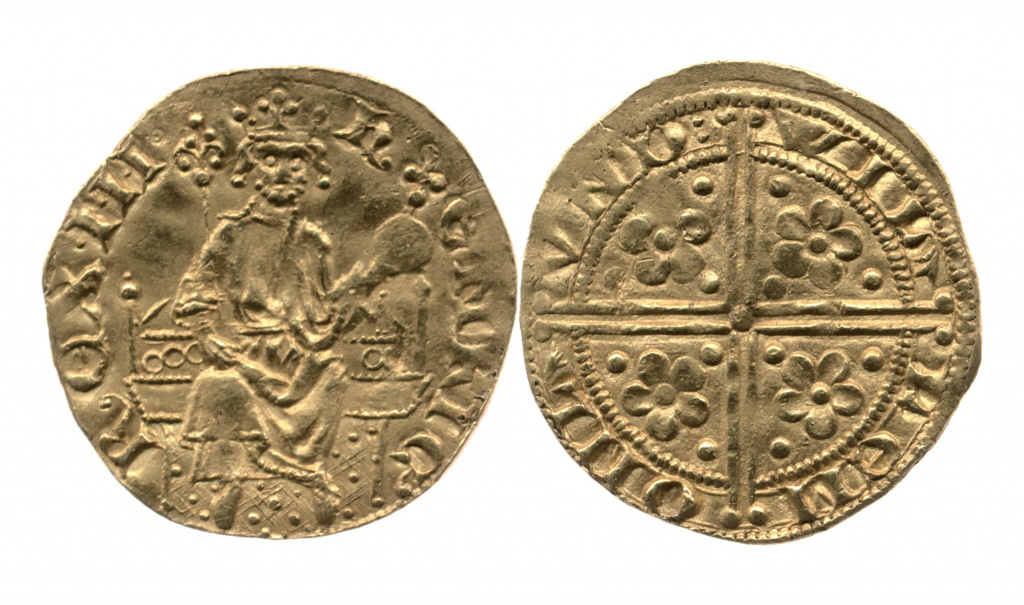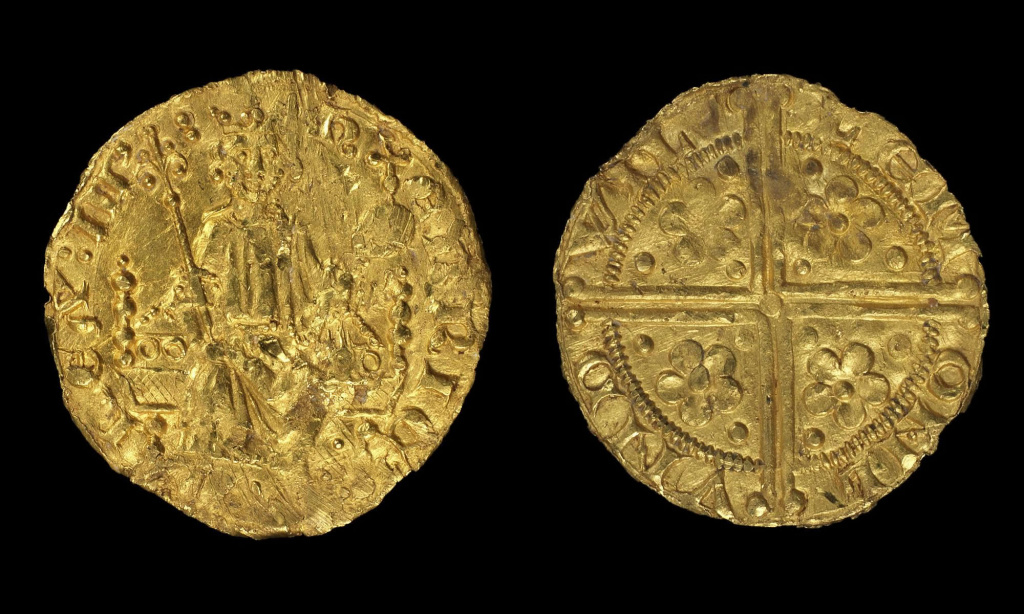World record price for Henry III gold penny found in 2021
Spink have sold this Henry III gold penny, a detecting find from 2021, for a world record price for a single coin. The hammer fell at £540,000 and with 20% buyer’s premium the purchaser will pay £648,000. The auctioneer said “A great result that will support two charities chosen by the vendor and Spink, specifically The Rodney Cook Memorial Fund and the Himal Foundation“
It is a coin of international importance and Spink describe it as “the most significant contribution to English Numismatics since the discovery of the Double-Leopard, sold at Spink in 2006“. This Friday the current bid is £250,000 with 2 days to go until the auction closes on Sunday 23 January.
The find
Unsure of what he had found

Photo: © Spink
The coin was unearthed on Sunday 26 September 2021 by Michael Leigh-Mallory near Hemyock in Devon. It has been recorded at the PAS as DEV-C34DA6.
He wasn’t sure what it was and so posted a picture on Facebook, where it was spotted by Spink.
“I owe it to the kids”
Michael had given up the hobby when he started a family but started again when they asked him into take them out detecting. He said “One day my wife said to me: ‘You realise you promised you’d take the kids metal detecting.’ So, I said: ‘Right, kids, we’re going detecting“. They found an Elizabethan coin which reignited his passion for detecting and so he bought a new detector. Within 15 minutes of going out with it, he found the coin. On Monday, he went to Henry III’s tomb in Westminster Abbey to offer his thanks for his good fortune.
Michael reflects on the find and metal detecting
Before the auction, Michael talked to Spink about the find: “Metal detecting is my way of getting close to our ancestors. It poses me so many questions, like who dropped this? What was his or her name? The past constantly intrigues me, and I love to connect with our shared ancestors and our natural landscape. I want to be able to understand more about who I am, and where I have come from. Metal detecting helps me to do this. It has also ultimately saved this magnificent coin from the plough blade. How it has survived three-quarters of a millennium relatively unscathed is truly miraculous.
The coin was found in an unprepossessing field and could quite easily have never been recovered. Now it is protected for future generations to enjoy and it is truly humbling that I was its finder. Like every hobbyist who continues to dream, my wish that day came true, and I just happened to be the very fortunate one. That is why I have decided to present the auction as I have.
Anyone could have found this coin, and so anyone should have the chance to own it. And to all those who continue to search and dream, I feel like I have to apologise directly to you, your time may come again. To me the market value of this coin is actually secondary to the information it has yielded, and will continue to yield about England’s first gold coinage. I am therefore thrilled to have partnered with Spink and Son, and can totally rest easy now its recorded and protected for future generations to behold and enjoy“
Henry III gold penny
In 1257, Henry instructed William of Gloucester to produce this gold coin, which was worth twenty pence. Up to then Arabic or Byzantine gold or silver coins had been used when higher value coins were needed for commerce. It is considered to be the first true portrait of an English king on a coin.
The coin was unpopular and became undervalued compared to its bullion weight. Therefore most were melted down and is the reason that are just very few known examples. The auctioneer states that there are seven with three being in the British Museum and one in the Fitzwilliam Museum.
I believe there are now nine known specimens, the last three are believed to be detecting finds. One turned up circa 1990 and the other circa 2006 and now this one. A very high number were struck but most were speedily withdrawn from circulation. However, the original number was so high that it is only to be expected that a couple (maybe more!) were lost during the short time they circulated.
This coin
The coin is a muling of two dies. The obverse is Evans Obverse Die 1, an example of which is in the British Museum. The reverse is the same as a coin in the Fitzwilliam Museum. Both coins are pictured below. This is the first recorded example of this muling.
The auction
The coin was sold in a single coin auction by Spink entitled The ‘Planta Genista’ Auction – A New Gold Penny of Henry III. Planta Genista is the Latin name of the common broom plant. The Plantagenet kings used it as an emblem and took their name from it.
Gregory Edmund from Spink said “The sale itself was very unusual because the buyer was there to bid in person. He loved that this fascinating story had unravelled from a chance discovery by a metal detector“. It was bought by an anonymous private buyer resident in the United Kingdom who intends to place the coin on loan to a public institution or museum.
After the auction, the finder, Michael said “It is quite surreal really. I’m just a normal guy who lives in Devon with his family, so this really is a life-changing sum of money which will go towards their futures.“



